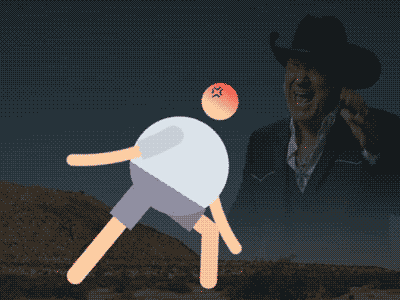There are many After Effects users who prefer to use the Wave Warp effect for the wavy motion. But as you may know, if you will use too many wave warps in your composition, it will slow down your machine.
So there the little twin of this effect called Ripple. Find out how to use it in our new quick tip. And by the way, it’s much faster than Wave Warp. Enjoy!
Creating a Ripple Effect in After Effects: A Step-by-Step Guide
Adding a ripple effect to your After Effects project can enhance the visual appeal and bring dynamic energy to your compositions. In this guide, we’ll walk through the process of creating a ripple effect step by step. Let’s dive in!
Step 1: Open After Effects and Create a New Composition
- Open After Effects and create a new composition by selecting “Composition” > “New Composition” from the menu.
- Set your desired composition settings, such as width, height, duration, and frame rate.
Step 2: Import Your Footage
- Import the footage or image you want to apply the ripple effect to.
- Drag and drop your footage into the timeline.
Step 3: Create a Solid Layer
- Right-click on the timeline.
- Choose “New” > “Solid” to create a new solid layer.
- Make sure the solid layer covers the entire composition.
Step 4: Apply the Ripple Effect
- Go to the Effects & Presets panel.
- Search for “Ripple” in the Effects & Presets search bar.
- Find and drag the “Ripple” effect onto the solid layer in the timeline.
Step 5: Adjust Ripple Settings
- Select the solid layer in the timeline.
- Open the Effects Control panel.
- Adjust the “Wave Width,” “Wave Height,” and “Wave Speed” to achieve the desired ripple effect.
- Experiment with other settings like “Center,” “Wave Type,” and “Wave Phase” for additional customization.
Step 6: Pre-compose (Optional)
- If you want to apply the ripple effect to specific layers, select those layers.
- Right-click and choose “Pre-compose” to group the layers.
- Apply the Ripple effect to the pre-composed layer.
Step 7: Preview Your Ripple Effect
- Press the spacebar to preview your composition.
- Make further adjustments if needed.
Conclusion
Congratulations! You’ve successfully created a ripple effect in After Effects. This dynamic visual element can add a captivating touch to your videos or animations. Feel free to experiment with different settings to achieve the perfect ripple for your project.
Happy editing!
What is the Motion Beast course?
This is the must-see course for any Motion Designer. It lays the foundation for all aspects of modern motion design and covers every topic from AE basics to character rigging and frame by frame animation.
The course will help you overcome AE-related barriers and fears which are standing between you and the wonderful world of animation and motion design
ONLINE COURSE
Motion Beast
Character Tool — Brand New Rigging Script by Motion Design School
Meet the Character Tool! We developed a versatile script for character animators. It contains functions for rigging characters and adjusting their appearance, workflow boosters and a bunch of secondary motion presets. Character Tool consists of 3 tabs: Rigging, Assistant and Presets. Here is a tutorial on how to boost your workflow with this script: Short overview of general features: […]
Top 3 After Effects Expressions to Simplify Your Workflow
Denys is the Motion Design School’s script wizard and the author of the Expression Trip course. In this article, he will share how to use the most essential expressions that are an indispensable part of any motion designer’s everyday life. Welcome to Expression world! Popular expressions After Effects offers really wide opportunities, but even they are not […]
7 Walking Animation Common Mistakes
Creating a believable walk cycle for your character can be a real challenge. At times it seems that you are doing everything right, but the result is still totally disappointing. You are not alone in this, we know your struggle. This article is a guideline for you to follow to ensure your characters walk as […]



